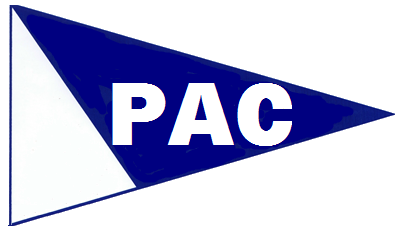Slipway Information
Prior to slipping, the boat owner must read and be familiar with the Clubs By-laws around slipping, have paid the appropriate slipping fees, and have the required insurance cover.
All owners of vessels using either of the slips must read and sign the Slipping Agreement form BEFORE slipping. The signed Slipping Agreement can be emailed to info@paclub.com.au or dropped into the office.
Only PAC certified operators may use the winches. The boat owner may ask the operator for assistance at any time. Stay calm and eliminate haste.
The boat owner sets up the cradle for readiness, secures all bearers, planks, moves the sling supports and fastens extra bolt-on stands as required.
The boat owner centres the boat in the cradle and adjusts the front and rear cradle arms to position the boat fore and aft. If using a rear sling, the boat should be well forward in the cradle with the sling between the propeller/sail drive leg and rudder. The boat owner then places the engine in drive and gives permission to the operator to raise the vessel. At this stage the operator can refuse until the vessel is in a safer position. Once the boat has fully grounded (i.e. keel to slip) on the cradle, the operator will stop the slip to allow the owner to tighten the front and rear arms, secure the sling if used, and turn off the engine (and seacock and bilge pumps if appropriate). The boat owner is to remain on deck during slipping, for communication and observations. The cradle is then moved to the raised position, the safety chain connected, and the winch power switched off. The owner then carefully climbs down from the vessel.
Safety Notes
- It is normal for the cradle to jerk during the slipping process, for example when debris is on the rails, when stopping and restarting, when the safety chain takes up, or the slip cable overrides at the extremity of the drum. It is most important to have the arms holding the boat in the bow (narrow) and in the aft area, well behind the maximum beam position. In the case of rear-heavy boats, boats near their balance point and boats with limited taper towards the stern (e.g. NS38, Adams 10), use of the slings is strongly recommended to avoid the risk of the boat rotating in the cradle. Boat owners should mark the position of arms relative to the keel, rudder etc., for future reference. Photographs or a sticker can be helpful.
- During water blasting, the anti over-spray curtains should be in place around the boat.
- There is an emergency telephone in the slip booking room.
- Boat owners are required to clean out the EPA screens, and ensure the slip area is left clean, ready for the next user. The slip operator may refuse to re-launch a vessel if this has not been done.
Notes
- Each boat registered for No. 1 slipway will be eligible for up to three (3) days and for the No. 2 slipway four (4) days on their respective slip each financial year ending 31st March
- Additional days MAY be available, arrangements must be made in advance with Slip Master, at a fee per day as per fee list
- Each user is responsible to ensure the slipway is thoroughly cleaned after use
- Each user is to ensure the gutters and waste traps are cleaned
- The two moorings in front of the slipways are provided for slip users.
Slip 1
For larger boats (17 tonne max).
In the peak season, September, October and November a time limit of 1 booking for a maximum of 2 days per vessel exists.
Slip2
Maximum of 6 tonnes and maximum 4 metres beam
